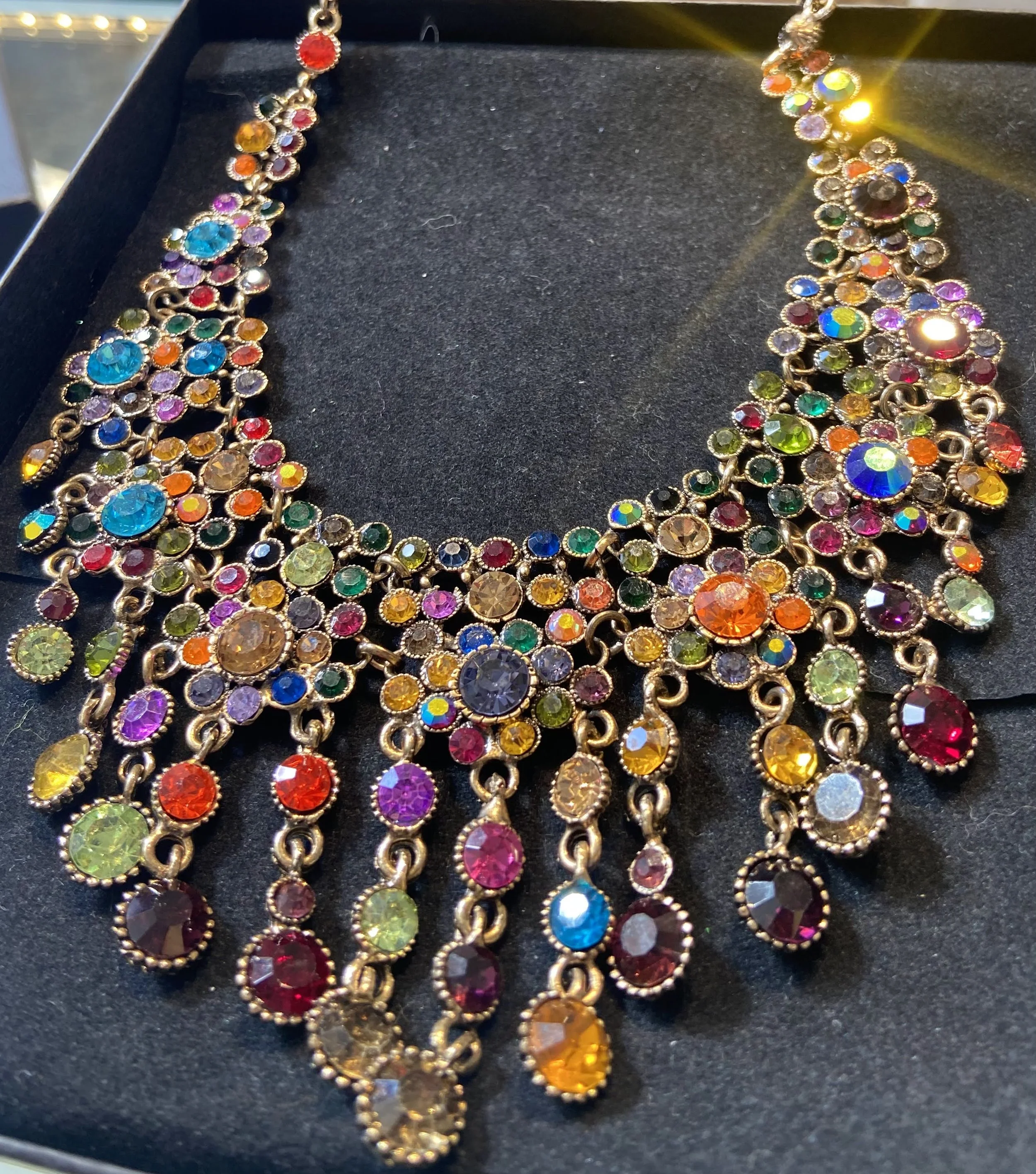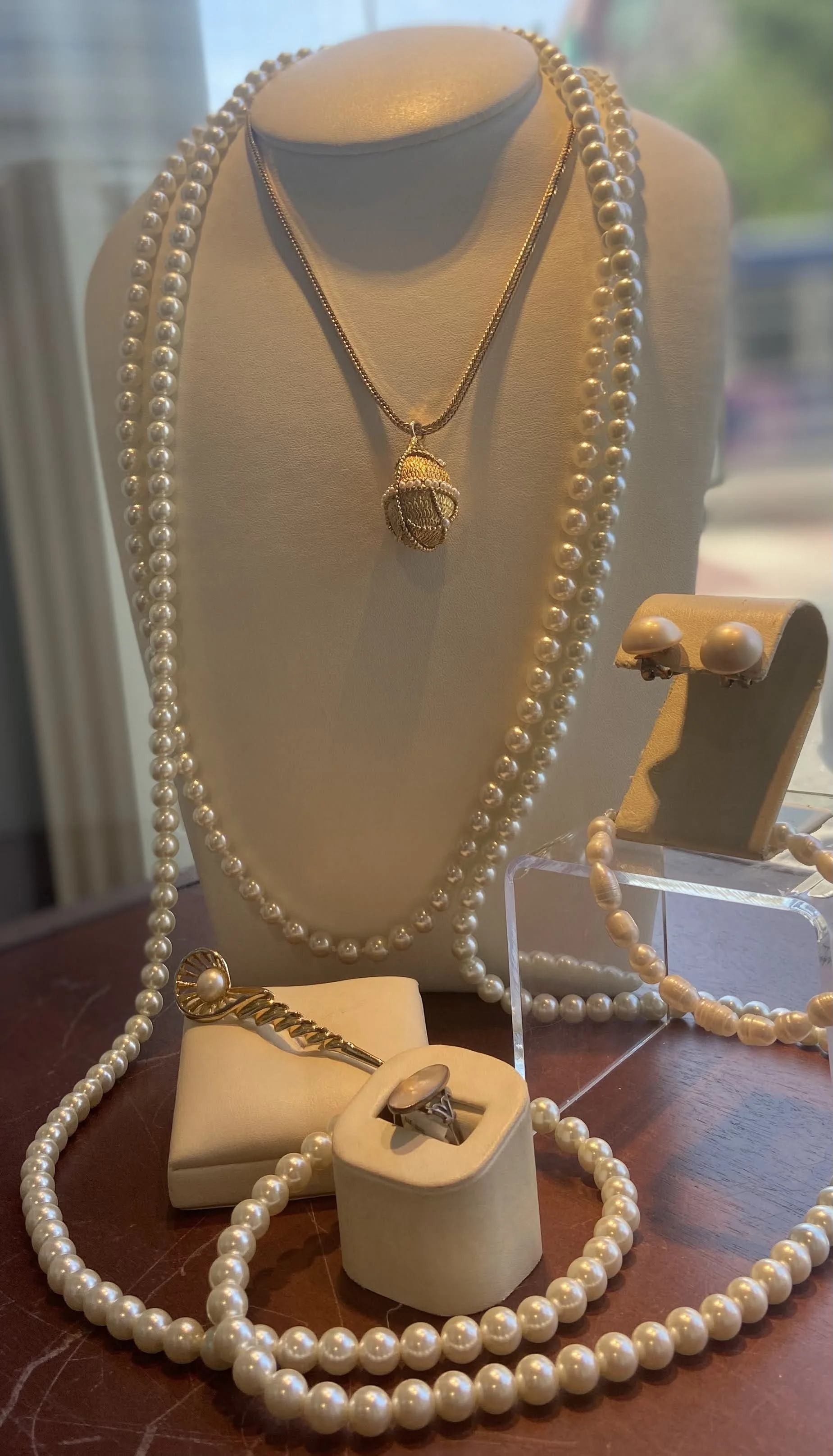Costume Jewelry and its Rise to Popularity
Sabrina Easley
Throughout the ages, costume jewelry has existed as the (typically less expensive) alternative to what we now consider “fine jewelry”. There are a few key differences between costume and fine jewelry; fine jewelry usually refers to pieces made out of precious metals (gold, platinum, and sometimes silver) and gemstones, while costume jewelry can be made out of a variety of materials and typically does not have the same perceived financial value.
As the materials for costume are considerably less expensive than the materials used in fine jewelry, costume jewelry has a unique ability to more closely reflect overarching trends during different points in history. From brass and copper to more non-conventional materials such as wood, clay, and plastic, costume jewelry has the ability to be flexible in its appearance.
So how and when did costume jewelry rise in popularity? In this post, we’ll explore how costume jewelry moved beyond a placeholder for and imitation of the “finer” version and into its very own sought-after, fashion-forward category.
The Creation of the Rhinestone
Glass was a very common placeholder for gemstones in costume jewelry pieces. In the early 1700s, Georges Friedrich Strass was at the forefront of imitation gemstone evolution; he developed a method to cut glass and glue foil to the back of his artificial gems that caused them to catch light in a way that had not yet been achieved. Working with a rock crystal found in the river Rhine, he developed what we now call rhinestones: a common diamond simulant that was originally made from rock crystal, but more often today is made from crystal glass or polymers such as acrylic.
In 1892, Daniel Swarovski patented an electric cutting machine that made precise facets on lead glass, giving them similar refractive qualities to diamonds and other gemstones. He eventually went on to open up lead glass cutting factories, producing multitudes of faceted glass imitation gemstones.
As the manufacturing process for costume jewelry and simulant gemstones became more streamlined and less expensive, the ability to mass produce costume jewelry pieces was significantly more feasible. This paved the path for big fashion houses and style moguls, such as Elsa Schiaparelli and Coco Chanel, to bring costume jewelry to an entirely new level.
The “It” Girls of the Roaring 20s
While we won’t be delving into the supposed feud between Schiaparelli and Chanel in this post, we can observe how both women pushed costume jewelry forward in their own unique ways.
Coco Chanel became known for her iconic pairing of long, layered strands of faux pearls and her haute couture clothing designs. This evolved into a look that many today ascribe to the 1920s time period. Elsa Schiaparelli had a very different approach to costume jewelry. Having been heavily inspired by surrealist artists, and even collaborating with Salvador Dali, amongst others, Schiaparelli leaned into more organic forms for her pieces. From pinecones to animals to insects, Schiaparelli employed “shockingly bright” colors and designs to draw the eye.
While both women were designers and artists in their own right, they were also quite influential with their own individual styles. Trends ignited, and costume jewelry spread as its own category within fashion, design, and art.
Beyond the 20s
While the 1920s and 30s may have kick-started a newfound popularity with costume jewelry, ongoing world-wide factors kept costume jewelry relevant. During war time, in particular World War I and World War II, precious metals such as platinum were being reserved for weapons manufacturing. As precious metals became scarce, this affected consumers’ access to fine jewelry. This spurred yet another wave in popularity for costume jewelry.
These dips and peaks in popularity can be traced up through today, where costume jewelry remains a large industry that many participate in! This rich history can be seen in the very pieces being displayed during our annual Estate Costume Trunk Show from 7/16 - 7/19.




